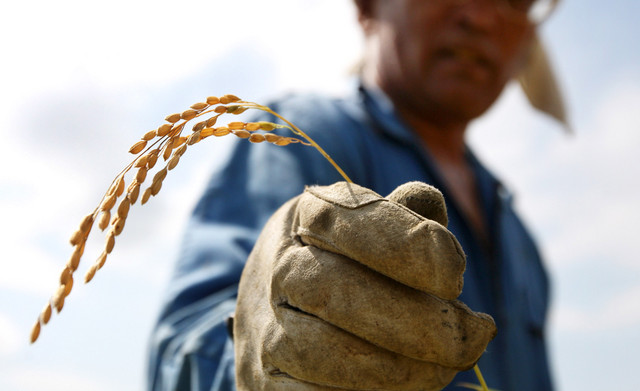Japan: A shift in rice production policy

Japan Times | Dec 1, 2013
Editorials
A shift in rice production policy
The government has announced plans to end its policy of limiting rice production and to phase out related subsidies by 2018 in a major shift from the decades-long program aimed at keeping up rice prices but which has been criticized for overprotecting farmers from competition.
But it will take much more than just ending the output control policy coupled with subsidies to turn Japan’s agriculture into a growth sector as envisioned by the Abe administration.
The decision comes just as Japan feels pressure to liberalize farm imports under the Trans-Pacific Partnership free trade talks, including heavily protected rice.
Whether the policy change makes Japanese farmers more economically independent of government protection and more competitive against imports must be closely watched.
According to the plan, the production control policy in place since 1970 will be terminated by 2018, letting rice growers determine their own output based on the government’s supply and demand estimates. Government subsidies provided to farmers taking part in the production control system — currently set at ¥15,000 per 1,000 sq. meters of rice paddy — will be halved in fiscal 2014 and terminated in fiscal 2018. Subsidies given to farmers when rice prices fall below benchmark levels will also be scrapped in fiscal 2014.
The policy of controlling production was introduced in 1970 to stop rice prices from falling. Behind the policy was declining consumption of Japan’s staple food due to people’s changing dietary habits. However, it has failed to reverse the trend of rice glut and rice growers continue to face difficulties as they attempt to make profits amid oversupply and falling prices. An earlier proposal to overhaul the policy was thwarted by resistance from the Liberal Democratic Party’s once-powerful farm lobby, which relied on farmers’ vote in rural constituencies.
Government spending to make Japan’s agriculture sector competitive against waves of farm trade liberalization — including a ¥6 trillion package introduced after the government accepted limited rice imports under the Uruguay Round of trade talks concluded in 1994 — is not believed to have borne much fruit.
The future of Japan’s agriculture remains uncertain, with the farming population rapidly aging due to a shortage of young people joining the shrinking industry. It is hoped that the abolition of the production control system will encourage ambitious farmers to expand rice production on their own initiatives and lead to the consolidation of the nation’s small-scale rice paddies — often blamed for the lagging competitiveness of Japanese rice — into larger-scale, more efficient farming plots.
Concerns linger over whether the new policy will result in a substantive change in heavily subsidized rice farming. In a move to placate farmers’ jitters over the end to the current system, the government plan calls for introduction of new subsidies beginning in fiscal 2014 — a direct payment system for preserving farmland in mountainous areas — as well as expanded handouts to promote a shift toward the production of rice for livestock feed.
Total government spending on such subsidies is not expected to fall from the current level. Whether these subsidies contribute to a desired change in the state of rice farming in Japan must be strictly monitored.





